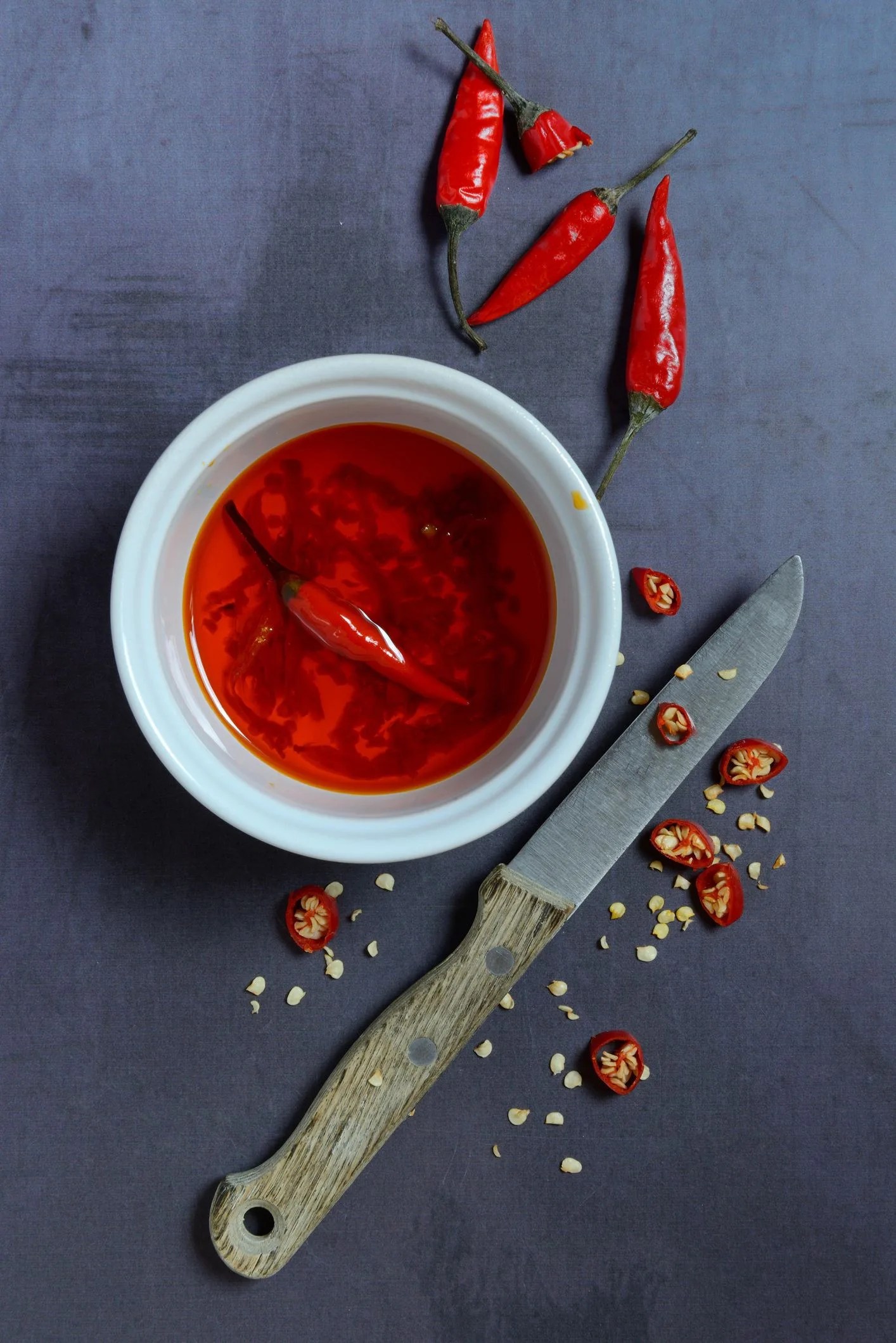I will never not have a can, jar or bottle of chili oil in my pantry. Well-seasoned dishes develop flavor depth from few drops, and, more importantly, leftovers are rescued.
Compared to hot sauce, chili oil – or hot oil – relies on (surprise!) oil to impart flavor instead of the vinegar base of hot sauces. Plus, hot sauce is typically a blended mixture, where chili oil uses whole pieces of chopped chilis, which sit submerged in the oil.
Despite its name, chili oil combines more ingredients than just chilis and oil. The addition of aromatics and seasonings combine to create customized flavor bombs that make eating a plain bowl of white rice a culinary experience.
If you’re familiar with the popularity of the spicy condiment, you may already know about Lao Gan Ma Spicy Chili Crisps, an Asian grocery store staple that’s found its way into the hearts and mouths of Westerners the world over. Nico Russell, founder of the Brooklyn-based Michelin-starred restaurant Oxalis, professes his love.
“Lao Gan Ma Spicy Chili Crisp was in 97 percent of my meals,” Russell says about his eating habits during shelter-in-place orders. “I ate way too much of it.”
The secret of Lao Gan Ma’s popular condiment may be the addition of MSG, which is not bad for you despite the popular and generally racist messages sent out in the early 2000s. MSG adds a blast of umami, but some store-bought chili oils, like one from Junzi Kitchen, omits the seasoning without losing much. Part of the appeal of Lao Gan Ma is its low price — less than $3 for a seven-ounce container. You know what’s even more economical? Making it yourself.
